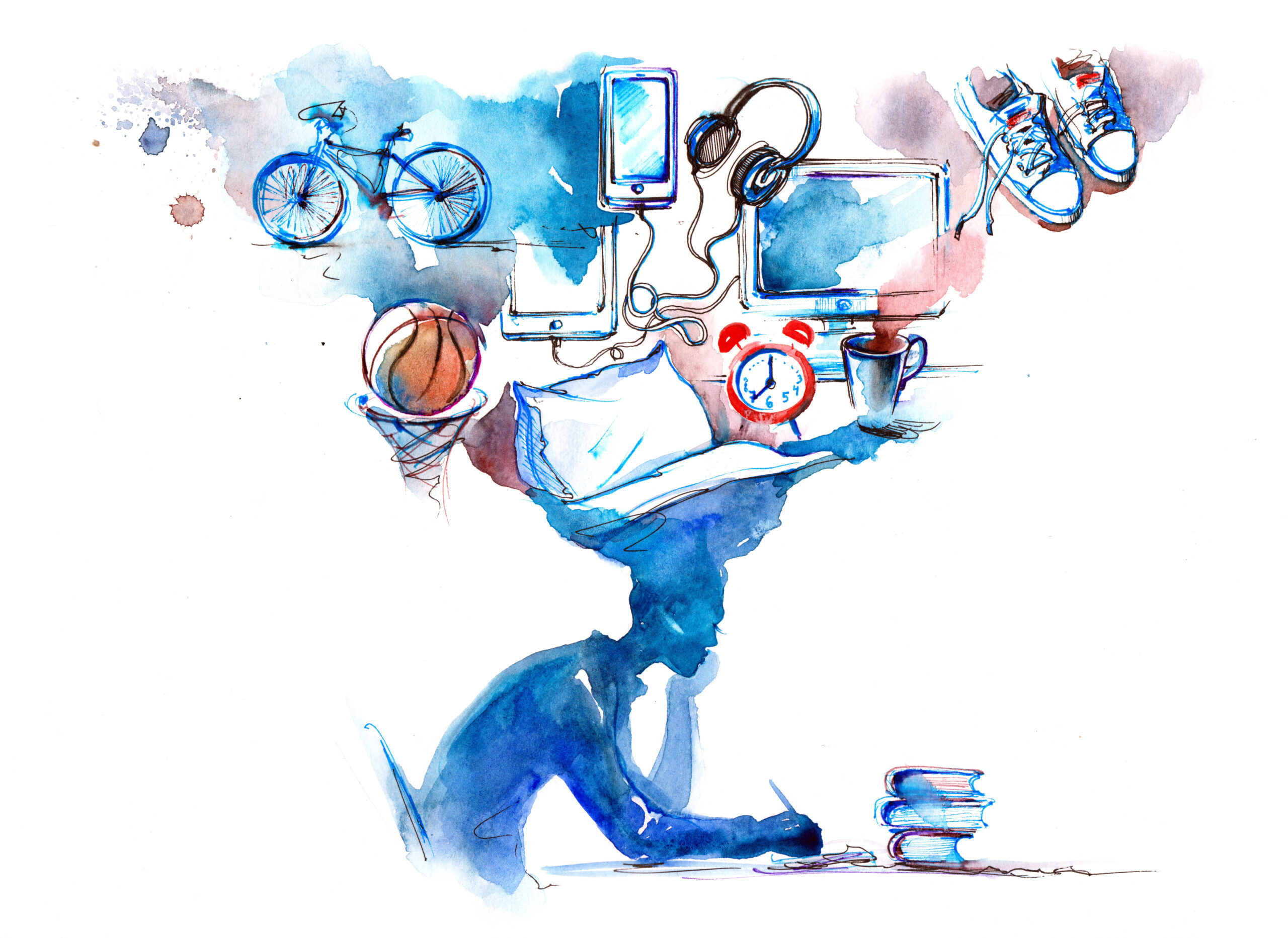DOLLAR$
AND CENT$
The big picture of NIL deals in college athletics
$917 million
worth of NIL deals in first year of the policy
$1.14 billion
projected for current year
$1,815
average value of all NIL transactions
$2,144
average value of deals within the Power 5
$558
average value of deals in the non-Power 5
*Sources: Opendorse and INFLCR
Though allowing student-athletes to profit from their hard work and talent through NIL deals is a huge leap forward, the current NIL landscape has created new inequalities in college sports.
In 2019, Division I college sports generated more than $15 billion in revenue. Giving student-athletes an avenue for making money in the industry seems only fair and long overdue. However, the new frontier of name, image, and likeness (NIL) deals has created a chaotic economic environment in need of regulation. Just where these rules and guidelines will come from, and what they will be, is yet to be seen.
How Did We Get Here?
On September 30, 2019, California Governor Gavin Newsom sat next to Lebron James and signed the Fair Pay to Play Act. The new law was the first in the nation to defy the NCAA and allow students to profit off of their name, image, and likeness. “Colleges and universities reap billions from these student-athletes’ sacrifices and success but block them from earning a single dollar,” Governor Newsom said. “That’s a bankrupt model.”
The NCAA responded by calling California’s new law “unconstitutional” and threatening to bar California schools from competing in NCAA events. The NCAA never acted on these threats, and the floodgates had been opened. Colorado was the next state to pass a law allowing students to accept compensation through NIL deals, followed closely by Florida and other states.
As the tension was building, a pivotal court case was making its way to the Supreme Court, one that would deal the final blow to the NCAA’s ban on student-athlete compensation. On June 21, 2021, the Supreme Court issued a decision in the case NCAA v. Alston stating the NCAA could no longer prohibit student-athletes from NIL profits. All nine Justices opposed the NCAA’s position, an emphatic rejection of the organization’s stance in an era when many high-profile Supreme Court cases split the Justices into liberal and conservative camps. “Nowhere else in America can businesses get away with agreeing not to pay their workers a fair market rate on the theory that their product is defined by not paying their workers a fair market rate,” Justice Kavanaugh wrote.
The NIL era in college athletics had begun. Students would be allowed to profit off of endorsement deals, although “pay to play” — receiving compensation for their actual athletic performances — would still be prohibited. The NCAA responded to the Supreme Court decision by issuing a set of vague and sparse guidelines. With no specific policies from the NCAA or regulations from the federal government, a confusing and chaotic, yet lucrative, patchwork of state laws has sprung up across the nation, turning some student-athletes into millionaires.
Inequality and NIL
Economic fairness is the issue. “College sports have also created enormous wealth to the tune of $14.4 billion per year for colleges and universities,” Democratic Representative Jan Schakowsky said during her opening statement, at the September 2021 House of Representatives Subcommittee on Consumer Protection and Commerce hearing. “Unfortunately, that wealth has not been equitably distributed for decades and led to systemic exploitation of athletes in service of the amateurism mythology.”
Though allowing student-athletes to profit from their hard work and talent through NIL deals is a huge leap forward, the current NIL landscape has created new inequalities in college sports. It is important to ask who benefits from the new NIL rules and who is being left behind.
The opening of the NIL market has in turn created a divide between a few high-profile players with large followers and everyone else. The website On3 closely tracks the NIL market, using an algorithm to estimate the NIL value of collegiate athletes. The “NIL 100,” a list of the top 100 athletes based on their estimated value in the NIL market, shows staggering valuations — Bronny James, son of Lebron James and freshman basketball player at the University of Southern California, tops the list with a valuation of $6.1 million, and 21 players are valued at $1 million dollars or more. However, deals of this size are only available to a tiny fraction of the more than half a million NCAA athletes. And the benefits go to some sports more than others. Twenty-four of the top 25 players on On3’s NIL 100 play either football or basketball, sports that, according to Opendorse, an NIL firm, account for 80 percent of NIL compensation. Additionally, NIL has unfortunately followed many other economic markets by creating a significant gender pay gap.
INFLCR, another firm that tracks NIL deals, reported a median transaction of $71 dollars from their July 2022 data, the most recent available at the time of this writing. In short, the industry is operating the same way most economic markets in the U.S. do — with most of the gains going to a small sliver of people at the top.
Congress and the Future of NIL
In American politics, it is unusual for the members of an industry to ask for their work to be more heavily regulated. But with the patchwork of laws — much of the responsibility for regulation lies with state governments and the NCAA has been reluctant to implement a detailed nationwide framework — creating what many view as an unequal playing field and an unhelpful “race to the bottom,” many coaches, athletic directors, and other leaders in college athletics have turned to Congress for a solution.
LSU football coach Brian Kelly recently met with members of Congress with other college coaches to stress the need for federal legislation and make the case that “college athletics is at a crossroads if this doesn’t get fixed.” In a recent NCAA letter obtained and made public by Sports Illustrated, the NCAA admitted that it can’t solve all of the issues without congressional intervention. “The reality is only Congress can fully address the challenges facing college athletics,” said Greg Sankey, commissioner of the Southeastern Conference, at a recent press conference.
All eyes are on Congress as several bills addressing NIL have begun to make their way through the legislative process. A bipartisan effort spearheaded by Sen. Tommy Tuberville (former head coach of the Auburn University football team) and Sen. Joe Manchin, for example, focuses on creating a public registry of NIL activity, along with the requirement that collectives — groups of private donors organized to fund NIL deals — be officially affiliated with a particular school.
Very few people think that we should go back to a time when college athletes were not allowed to profit from their name, image, and likeness — the economic inequality inherent in college sports in the pre-NIL era was unfair, as all nine Supreme Court justices confirmed in their June 2021 decision. And at least some of the chaos associated with the first years of NIL in college athletics can be attributed to the expected growing pains of a new industry.
Still, the future of college athletics, with its more than half a million student-athletes and over 182 million fans, hangs in the balance. And there are many important questions that have yet to be adequately addressed. How much should the government intervene in the workings of the free market in this context? Should states be allowed to develop their own policies, or do we need a national standard? And finally, if a federal standard implemented by Congress is the only way forward, can an institution that is, by design, slow to act be the savior so many are hoping it will be?

